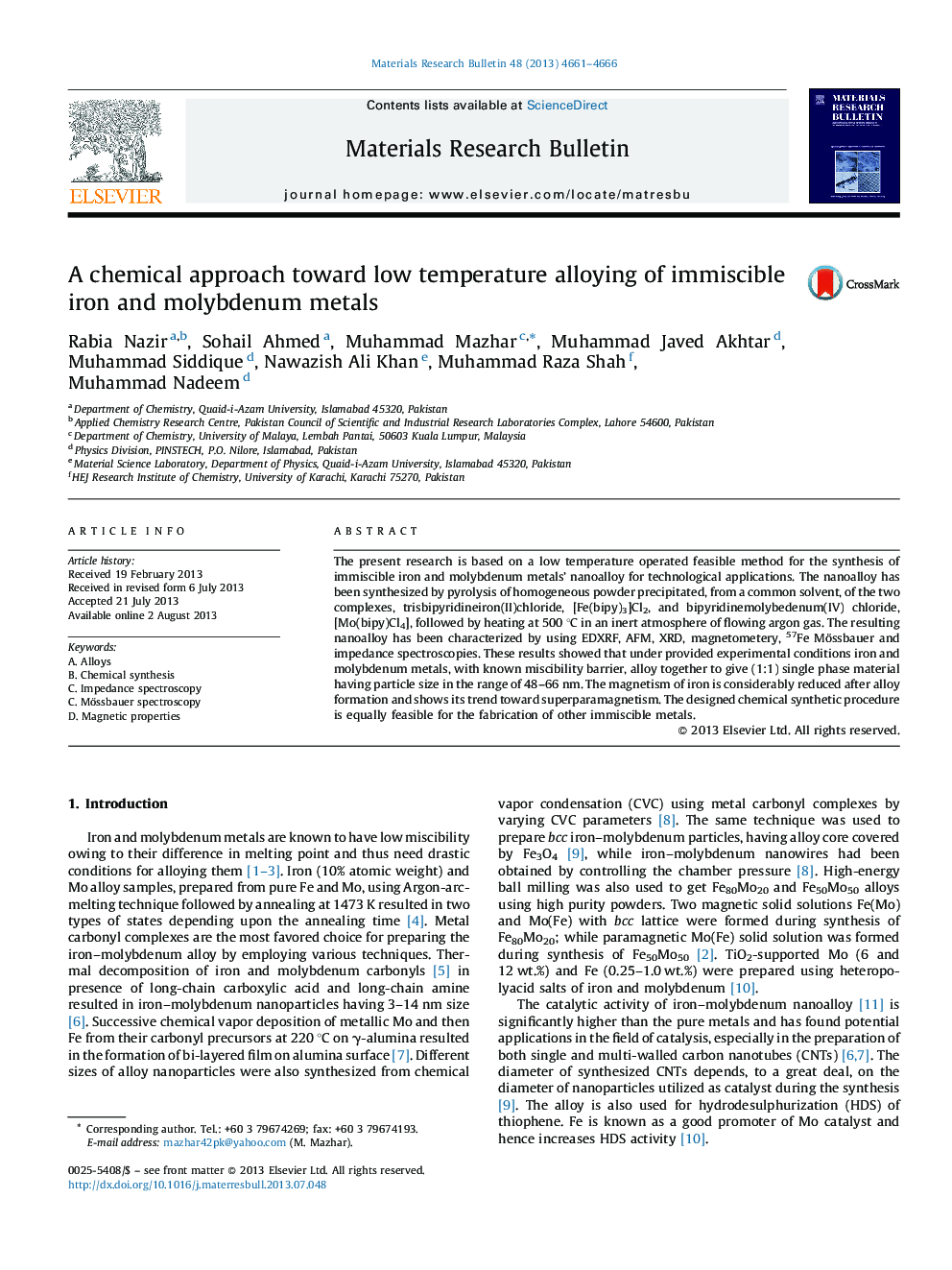| Article ID | Journal | Published Year | Pages | File Type |
|---|---|---|---|---|
| 1488945 | Materials Research Bulletin | 2013 | 6 Pages |
•Low temperature pyrolysis of [Fe(bipy)3]Cl2 and [Mo(bipy)Cl4] homogeneous powder.•Easy low temperature alloying of immiscible metals like Fe and Mo.•Uniform sized Fe–Mo nanoalloy with particle size of 48–68 nm.•Characterization by EDXRF, AFM, XRPD, magnetometery, 57Fe Mössbauer and impedance.•Alloy behaves as almost superparamagnetic obeying simple –R(CPE)– circuit.
The present research is based on a low temperature operated feasible method for the synthesis of immiscible iron and molybdenum metals’ nanoalloy for technological applications. The nanoalloy has been synthesized by pyrolysis of homogeneous powder precipitated, from a common solvent, of the two complexes, trisbipyridineiron(II)chloride, [Fe(bipy)3]Cl2, and bipyridinemolybedenum(IV) chloride, [Mo(bipy)Cl4], followed by heating at 500 °C in an inert atmosphere of flowing argon gas. The resulting nanoalloy has been characterized by using EDXRF, AFM, XRD, magnetometery, 57Fe Mössbauer and impedance spectroscopies. These results showed that under provided experimental conditions iron and molybdenum metals, with known miscibility barrier, alloy together to give (1:1) single phase material having particle size in the range of 48–66 nm. The magnetism of iron is considerably reduced after alloy formation and shows its trend toward superparamagnetism. The designed chemical synthetic procedure is equally feasible for the fabrication of other immiscible metals.
Graphical abstractFigure optionsDownload full-size imageDownload as PowerPoint slide
